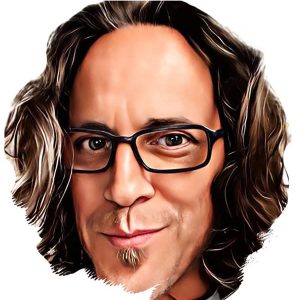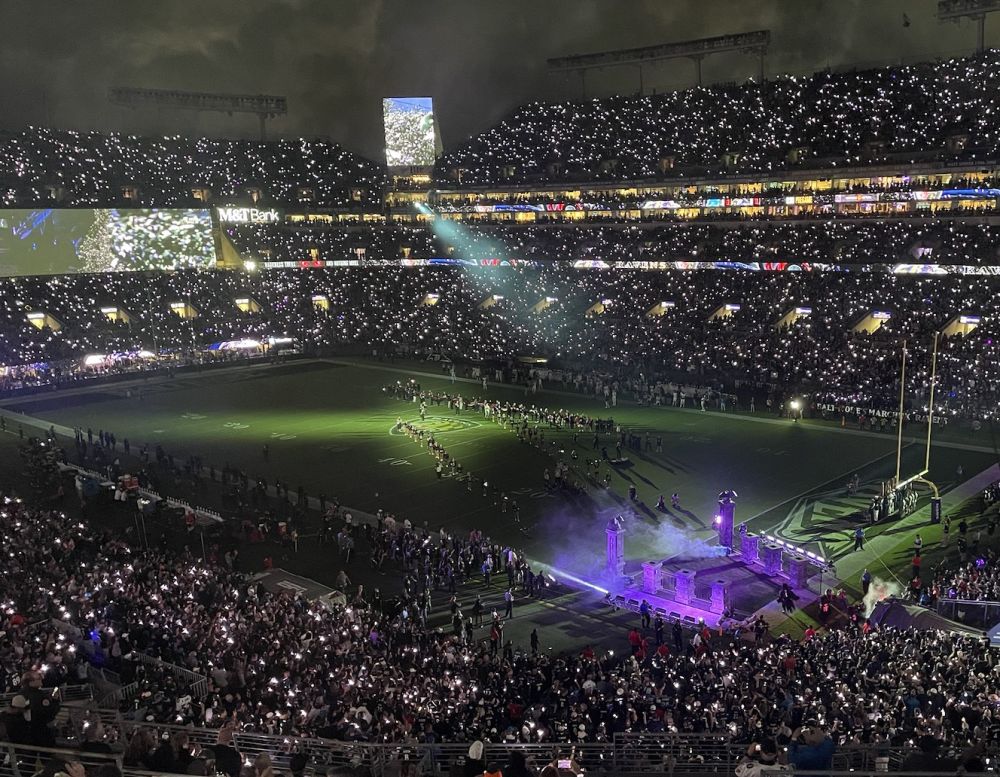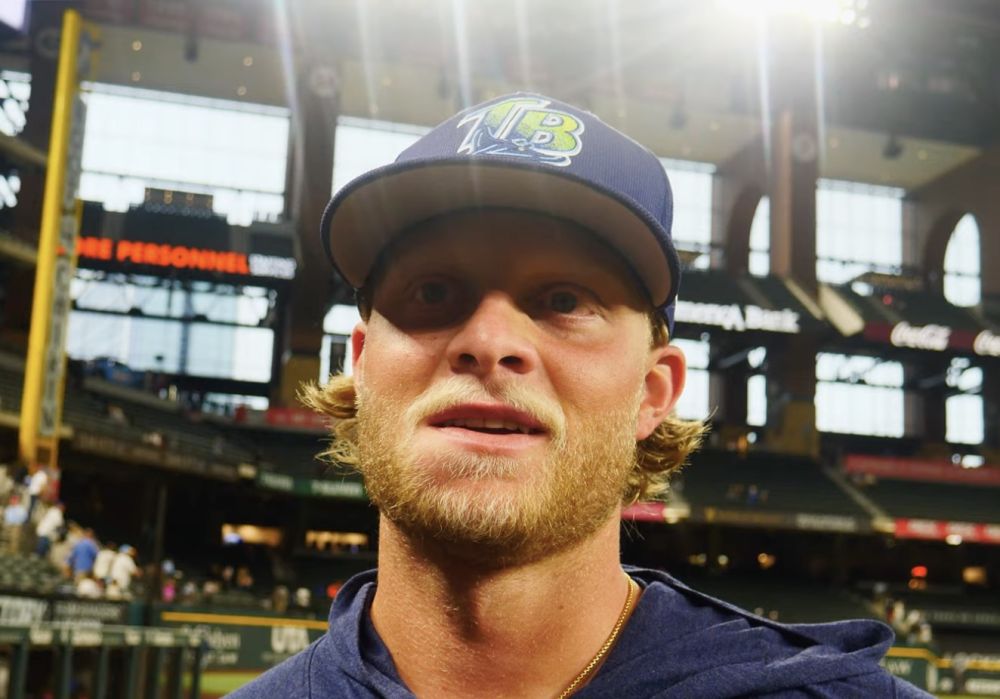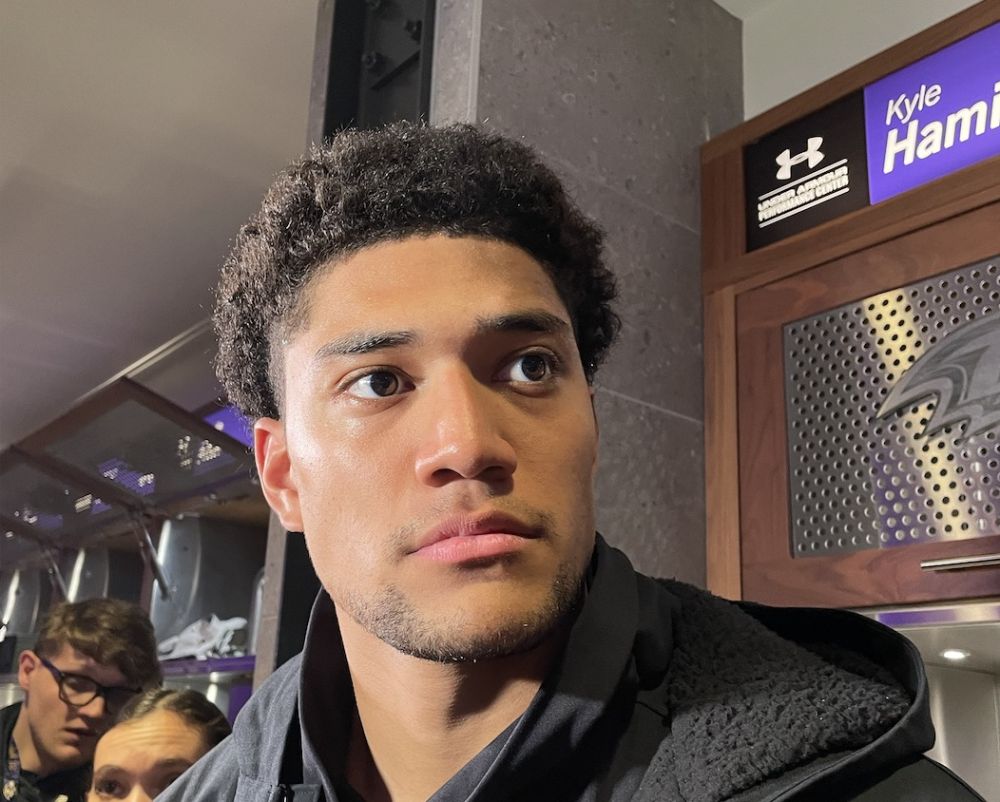During our cannabis education series, Wendy Bronfein of Curio Wellness has promised to give Nestor a tour of the entire operation. So, what will he find when he puts on the white suit and goes behind the closed doors of an industry not many folks have seen or understand?
SUMMARY KEYWORDS
plants, horticulture, cannabis, growing, strains, crab, curio, wear, find, space, hairnet, put, tour, harvest, product, science, buds, part, week, tissue culture
SPEAKERS
Wendy Bronfein, Nestor Aparicio
Nestor Aparicio 00:00
So, w n st Towson, Baltimore. And Baltimore positive were positively taking the Maryland crabcake tour out on the road. So pleased with myself we we got a dozen dates between now and Christmas. So jump on, we’re gonna be at all of our sponsors all the awesome places and we’re doing a little off the track stuff as well. We’re gonna be gertrudes that at the BMA with Dan Rodricks promoting his amazing, amazing play Baltimore, you have no idea I am pimping for Dan, because I’ve known for 40 years but because it was just such a great event. And I’m hosting lots of friends and sponsors and I’m hoping this person might be there on December the eighth and reopen as well. Wendy brown fine joins us now for curio wellness and father and daughter. This is a special week for me. Because like not everybody gets to do cool things like I get to do in my life. Last summer. My wife markets friends took me up to Sunbury, Pennsylvania beautiful day, and I had to put my hair up because let me let my rock and roll here because you guys sponsor CFG bank and the Rock and Roll been sad take my hair, and I had to put it up a little hairnet. And all the girls were having fun because I had to go through the ice cream factory. And the only question I’m going to have Wendy as I tore the curio, grow facility. I believe you’re in Timonium, I have to put my hair up right because it’s like a total science thing, right?
Wendy Bronfein 01:19
Yeah. Beard net hairnet.
Nestor Aparicio 01:26
So I have to shave this.
Wendy Bronfein 01:28
No, you don’t have to shave it. You have to wear a beard net. A beard net added hairnet when I have exit
Nestor Aparicio 01:34
when the plague came. And everybody had to wear a mask and everybody’s bitching about it complaining and my wife almost died twice in 14 and 15. So the smell of Purell on my hands coming in and out of every room and wearing a mask all day, every day in my wife’s presence for 155 days. It wasn’t all that weird. So I’m good. I’m good with maths. I’m used to it now. So anything else? I mean, I’m gonna be in the mic TV shoot. Really? Right?
Wendy Bronfein 01:59
Yeah, yeah. Uh huh. booty Booty is on your shoes. Yeah, so, so don’t wear a lot of layers. Because Tyvek is not a breathable fabric.
Nestor Aparicio 02:12
All right, so listen, you told me last week and we were continuing our this is an ongoing education series. And there’s parts of this that feel like if you’re interested in cannabis, it’s like the first scene in Willy Wonka when you go into the candy store and a man sitting next to you, and you know, who can make some, you know, and from Amsterdam 20 years ago to Denver 10 years ago to the science to everything we’ve talked about the science of how this went from fan federal, all the things we talk about, to where it actually comes from, and the science part of this, that a lot of people didn’t believe, years ago, or were made not to believe that I’m going to see this in action. And how many people get to see get the where the mic TV sued, because I mean, it’s really a special and I want to treat it as special and, and be fun, but also be educated and also really understand what’s going on. The reason you’re bringing me over there is because we’re doing this series to try to really understand this better. I remember Sanjay Gupta going into educational facilities 15 years ago talking about children that had all sorts of issues that that this plant can help with. And that was a long time ago, we’ve come a long way. Right?
Wendy Bronfein 03:25
Yeah, so you know, there’s sort of two factors here. One is we’re regulated industry so we have a lot of compliance that contributes to the limited people who come in and then we’re also a very hygienic space. So we’re not trying to introduce any outside influences to our growing process. So you know, we have layers of the building until you get to the plants we have air filtration that keeps the space very clean. We have the protective wear that people use that the staff there is wearing a specific uniform and showers before they enter the space guests put on all of the Tyvek and PPE so it is a very controlled environment.
Nestor Aparicio 04:06
Should I not wear deodorant?
Wendy Bronfein 04:08
No, you should.
Nestor Aparicio 04:08
Okay just just make sure I’m not going to squirt on any cologne or anything out I keep the product down in my hair my locs need hair cut by the way. So what what should I know ahead of time and what should my audience know that I might be able to tell them or show them in the aftermath of all of this but I’m touring the facility this week it’s it’s going to be my wife’s like you’re gonna wear the mike TV suit and like what should I know heading in about like, room to room place to place I put up last week’s piece and you know I have a stock photo photographs I can find and I found all the science part of labs and different machines and all of the things that make the products that make curio wellness curio wellness that did not exist just a handful of years ago and I’m fascinated to see room by room and process by process exactly where it all comes from.
Wendy Bronfein 05:07
Yes, so that’s exactly what we’ll do, we’ll kind of walk the life of the plant, right. And so there are different stages that it grows from a baby to full maturity. And then when it is actually harvested, and then the process that happens after you harvest to dry it to cure it, the outside labs come in and take samples so that it can be tested, we then get back a certificate of analysis validating that only the same 50 of the product with the total cannabinoid and terpene profile, and then it reaches the stage of of any final trimming and packaging. And that end looks exactly what like what you’ll find in the dispensary. So you’ll be able to get to walk that lifecycle of the plant and the process, as well as see some of the r&d work that we do there. And really just like the vastness of the space, right, the building is 160,000 square feet.
06:02
160,000 square feet.
Nestor Aparicio 06:05
Yes. So it’s not going to look like a nursery or a place where tomatoes are. Not to brag on myself too much. And I did brag about this on the mirror crabcake tour last month when I had science teacher George Schulman on the program, and I admitted to him that I took horticulture in 10th grade I got kicked out of typing class while I didn’t have a finger right so typing Mr. Pillai. So I’m like, get me out of here and Moeller put me into horticulture because they’re the only class I could go into. So Miss Miss Lala, she was wonderful Eve. Lalas was my horticulture teacher in 10th grade. And so I mean, growing plants, my mom grew plants my wife is crazy about with loves growing plants. What makes this different in that way? I mean, I guess there’s so much mystery about it, because of the illicit nature of the plants, by our government for a long, long, long, long time. But it’s, I guess, other than the volatility, sort of like growing tomatoes, or I’m way off in saying that.
Wendy Bronfein 07:06
Now, I mean, I think, you know, in our approach with a lot of our team, we’ve always looked at people who are kind of masters of their domain. So anyone who’s ever led our cultivation division has come from large scale horticulture, right? So our VP of cultivation was growing flowers in Africa that were shown and sold in the Dutch market, he then came to the United States and was in more of a shrubbery and tree kind of nursery out in California. So it’s really about somebody who understands plants and understands plant growth and the genetics themselves. We also have two PhD plant scientists on staff who really are responsible for all of the r&d work we do, and our overall genetics portfolio. So that is what drives the success of, of kind of the plants and the operation overall, the other pieces you referenced, like a nursery, like I think you were thinking like a greenhouse, right, so we’re not a greenhouse we are indoors. So the spaces will look the same. And in terms of having large areas of potted plants that are growing, but what’s happening is you’re in there in single rooms and those the lighting, the feed the water, the air, the humidity, those variables can shift relative to where they are in their lifecycle. And
Nestor Aparicio 08:37
unlike cannabis is not not the only thing grown in this sort of facility right? Like I would think in lots of cold places. They have 160,000 foot somethings where they play a huge groceries or any literally anything, right?
Wendy Bronfein 08:50
Yes. And the reason that the horticulture is love this is because you know, they’re playing Mother Nature, right? There’s no like it’s, it’s sunny, it’s cloudy, it’s raining, it’s snowing, right? It’s the temperature, the humidity, the co2 factor, the you know, every the light to the plant is all controlled by that and they can create an optimal optimal condition every single day. Right? And so you can fully express all the virtues of that plan by being able to control the variables.
Nestor Aparicio 09:25
When the broad fine is here I am touring the curio Grove facility this week and I am fascinated by the science part of this to you thanks like when you say like genetic profile of our brand, literally and saying to myself why when I go to the wise markets, a certain tomato is grown in a certain way or a certain a broccoli was engineered, you know, a plants right and I’m thinking to myself, where is this going with scientists to your point? And I guess I think about it as a kid who took horticulture and 10th grade and trying to grow a black rose or try I defined, you know, growing different variables of different plants to find a tulip. That would be a certain color. I would think we’re really at the beginning from a scientific standpoint, because all of these scientists, and I’m sure they’re young people going to college in different places coming up. Older folks, folks, maybe our age weren’t doing this in this way. 1015 20 years ago that to be in the space, where you can genetically engineer and alter a blissful wizard, Rompuy, these things that didn’t exist from a brand profile, but then to make it even where you’re going to be five years or 10 years from now. We’re only at the beginning of trying to figure all this out, right.
Wendy Bronfein 10:41
So what when I talk about the genetics, I’m referring to all of the strains that we have in our garden, and the health of those strains, right, because the vulnerability of your garden is any sort of infestation or disease or anything that compromises the plan and and ultimately your harvest. Right. So we have our PhD scientists are able to take samples from our flowers, or plants and and look at them and evaluate the health and say, Okay, these are great, healthy plants. And then we can maintain them over long periods of time, right, we have something called a tissue culture lab, which is, in many facilities with cannabis, you have mother rooms, right. And the mother is how you make you take cuttings from a mother to then propagate more plants and have additional harvest. But you got to keep your mother’s alive and mothers are bigger plants, they need more energy, they need more space. tissue culture, which is very common across horticulture is being brought into cannabis. Now like many things, we get more and more normalized over time. And so in this case, I would I would explain to that it’s very much like a us like an IVF analogy, right. So if we have a strain, like blissful wizard, we would take a very small cutting off of that, it would be reviewed in by our plant scientists team to evaluate that it’s a totally healthy plant, it has no viruses, viroids anything irregular to it, and then we would suspend it in a test tube, where we can keep it healthy, in for an extended period of time, and know that when we want to grow it again, we can grow off of that tiny little cutting. So it’s just like saying, Okay, I took I made an embryo, they tested the embryo, they assure that the embryo had all the right chromosomes and, and appears to create a healthy child, and then I’m going to freeze it. And then I’m gonna thaw it out when I want to use it later. Now we’re not freezing, but we are suspending it in a way that it is it has healthy feed, and the plant will stay safe in that encapsulated area until which time we want to grow, which also means that we can hold more strains in inventory, because we don’t need as much space from others. And we use less energy to hold all of that. That large portfolio of strains that is in our garden, I guess the only good, I would say when we did our expansion, when we put on an addition to the building and we had to populate the new room or the new rooms that were there. We were able to do that purely from our tissue culture. We had built up the stock and tissue culture that we were able to then propagate off of that which was was which was a really remarkable feat inside of cannabis. It’s very normal, like if you buy you know, berries at the grocery store. You know, the reason you have that consistency with something like a Driscoll you know, Berry Overbury week over week is because they use a tissue culture process. So it’s a very normal technique in traditional agriculture, but cannabis kind of because we’ve been relegated to the outskirts, we’re able to kind of get these approaches brought on more and more to normalize our existence.
Nestor Aparicio 13:52
When he brought finds here, she runs things with the curio wellness or friends foreign daughter, we’re gonna be over there on December the 15th trying to put an event together I’ll pre promote that. We’ll get out there. I’m gonna be this week at the Grove City. I already blown my mind with the science part of this and I would just say as a wrap up I think every person that’s had a medical card over recent years go to a place and we don’t have that right now. We don’t have that right now. And I think that that’s the part that you guys are getting right that was probably the hardest part of this in the beginning is saying it is a plan and it’s like finding a tulip in December unless you know what you’re doing and you have some some depth I’d 567 years in you can be at 12 month a year with a product right that’s that’s was very hard for your industry to do. Right.
Wendy Bronfein 14:40
Well, I yeah, I think what you’ll see is that for the most part, like until you’ve gotten to a more mature stage of the plant, it’s going to smell and seem like a like a lawn and garden center right the plant doesn’t showcase kind of the characteristics that you associate with cannabis until the final stages of maturity because that’s the term pins coming out. That’s when it smells like cannabis.
Nestor Aparicio 15:04
Literally, plant blooms. Right,
Wendy Bronfein 15:06
exactly. And you will you’ll also notice is that particularly in the mature stage, that’s when you’ll be able to see differences between strains when they’re in a room together, right? This one is taller, this one is shorter. This one is sort of, like wispier. This one is more condensed, this one is darker green or purpley. Green, this one is really light and bright green. That’s where they sort of show themselves to be distinctly different is as it’s maturing. And so in our garden, we’re kind of look we’re looking for strains that not only appeal to the consumer, but like, like, how do they yield do they do they give a lot of biomass a lot of buds off of the harvest? Are those are those buds rich in the cannabinoids and terpenes that we’re looking for in terms of the product mix we want and that the the consumers and patients are looking for in terms of their needs. And then ultimately, you know, what isn’t sold as flour is is sold to our processing license and is used to extract the oil which will also go over there. And so, you know, part of that yield is important because they need that that’s the other piece of the puzzle when I’m on the tour and I’ll do this for you. But I often you know when you get down to the end and you’ve got these buds that are have been harvested, and there’s big ones and little ones and then there’s trim for Marylanders. I’m normally like okay, this is like crab, right? Like you have your jumbo lump. You’ve got your lump. And then you got that filler stuff, right? The filler stuff is kind of like the trim that comes off of everything. And so all of that is what we use to extract to get oil to make products and all of the quote lump meat is are the buds that people buy.
Nestor Aparicio 16:47
Alright, so anybody that is wondering me getting interested in the science, I got interested in the science crab so I can teach you something all those crab houses that all the crab meat you find in containers. Female crabs because the male’s never go to the piggery it’s the females that go to the piggery that’s why the meat so sweet because it has orange row in it. Because it’s female crab if you if you get it in season, even Venezuelan crab meat, Maryland crab meat, same thing because the male’s the bigger ones all go to pastas to go on a table at $10 A crab so similar. Like that. They never send the jumbo crab to a piggery never. So anyway, how about that? When do you gotta go because I know your time short. I will see you this week. I’ll be back to report next week. Our friends at curio wellness partnering on all things we’re doing for our 25th anniversary. countdown has begun. We’re 23 moving to 22 this week. You can find all of that out at Baltimore positive.com



























